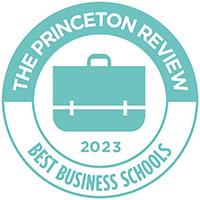Retired NY Life president and WSU alum offers his tips for career success
EDITOR’S NOTE: Fred Sievert, retired president of New York Life Insurance Company and a proud Wayne State University alumnus (’76 M.A.), has had a long and successful career in business. He’s learned many important lessons along the way. He shared a few of these at WSU’s spring 2015 commencement. Here, in his own words, is Fred Sievert’s complete list of:
Five Tips on Achieving Early Career Success
The following is career advice I give to my business school students. I’ll give you five tips on achieving success in business that I have also field tested with the young executives I am now mentoring.
The genesis of these tips was a question posed to me by my daughter Dena, as she was languishing in an entry-level position at a large company in Connecticut. She simply asked me what she could do to distinguish herself from all the other young employees.
I thought long and hard about how a new employee at my own company might get a fast start and thereby become recognized as someone of high potential.
1. Demonstrate Commitment
Arrive early; leave late
Tip number one in business, as I told Dena, is to demonstrate your commitment to your company by getting to work early, leaving late and remaining fully engaged in whatever you do. In other words, put in the time! That sounds simple enough, but so many young people today are operating as if they’re punching a time clock. Their personal lives take priority over their vocations, and they exhibit noticeable disinterest in their jobs, and it shows.
2. Memorize the company’s Vision and Mission statements
Actually commit these statements to memory so that you can recite them. This embeds them in your thinking so that they may be recalled quickly in discussions around difficult decisions or issues. Such issues should always be reviewed in light of the company’s overall vision and mission. Doing the same for key corporate strategies is also advised.
Tip number two in business relates to understanding your company’s mission.
I told Dena to memorize her company’s mission statement. She asked, “Why memorize it?” I told her, not so that she could impress people by reciting it. No, she should memorize it so that it would be embedded in her brain!
Then, as she considered difficult decisions and actions, (or observed those decisions made by others) she could readily test them against the stated mission of the organization. It’s important for the decisions and actions of a company to align well with its corporate mission.
3. Develop Organizational Awareness
Develop a network across departments – show an eagerness to learn and understand how the company operates; who does what, how it fits together and how things get accomplished.
Tip number three involves networking throughout the company to enhance awareness of culture and how things get accomplished, Every company is different in this regard and it takes some level of immersion or curiosity to acquire this knowledge. Starting down this path can best be accomplished informally in meetings at lunch or after work with colleagues in other departments. Also, offer to help them out if there seems to be an appropriate way to do so. Dena was able to develop her network by first offering to provide French translations (she was a French major) for departments interacting with employees in the French branch of the company.
4. Demonstrate Strategic Thinking and Understanding
Understand the company’s products, services, customer base and targeted markets. Identify your company's marketplace strengths and competitive advantages. Determine key strategies for the major business units within the company. What’s your company’s edge over the competition? Can the company sustain it?
Tip number 4 relates to developing your strategic knowledge and abilities. Many employees never fully appreciate the difference between strategy and tactics. A far greater strategic awareness can be developed by focusing on the competition and your company’s results relative to that competition. Strategy is about beating the competition so learn as much as you can about the competition and the strategies they are following as well as their successes and failures. Are you losing your "edge" or "competitive advantage" or are you building on it?
5. Understand Financial Underpinnings and Develop a Profit and Loss Mentality.
Seek out (from someone in the Finance or Accounting Depts.) a high level understanding of the balance sheet and Income statement by business unit and ask what drives profitability in each business unit. Identify and track the key measures of success. Take profitability measures into account in decision-making.
Finally, tip number five is perhaps the most difficult, but also in my view is the most important. As I thought about my New York life experience I asked myself what is the biggest career blocker and deficiency among employees, even among very high-level executives?
The answer came to me quickly; they simply don’t understand or appreciate the importance of financial results. Too often the focus is solely on top line sales and revenue growth, almost to the exclusion of balancing a budget and achieving a strong bottom-line. But even worse, too many executives can’t even read a financial statement; much less manage to one.
So I told Dena that she needed to find someone in the accounting department who could give her a fundamental understanding of the balance sheet and income statement of the organization. And once she felt comfortable with that understanding, I told her she had to ask the killer question and ask it exactly as I articulated it to her.
The killer question was this, "What drives the profitability of this business?" I told her I wouldn’t be surprised if the CEO of her large company, heard about the questions this young lady in the mail room was asking.
Indeed she shocked the guy in the Accounting department and word did get out. And I’m sure, that (among other things) ultimately contributed to increased responsibilities and a very fast start for Dena.



